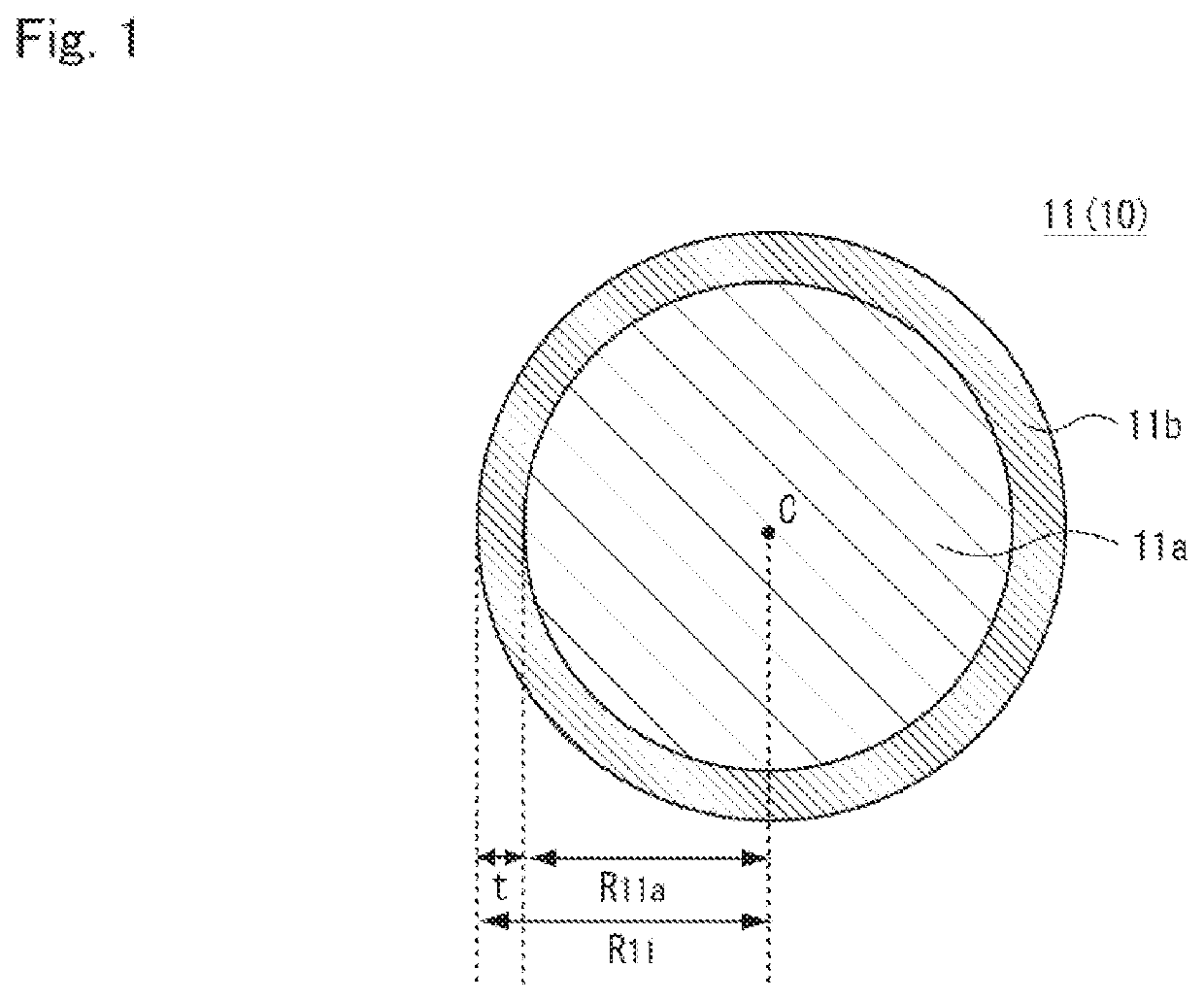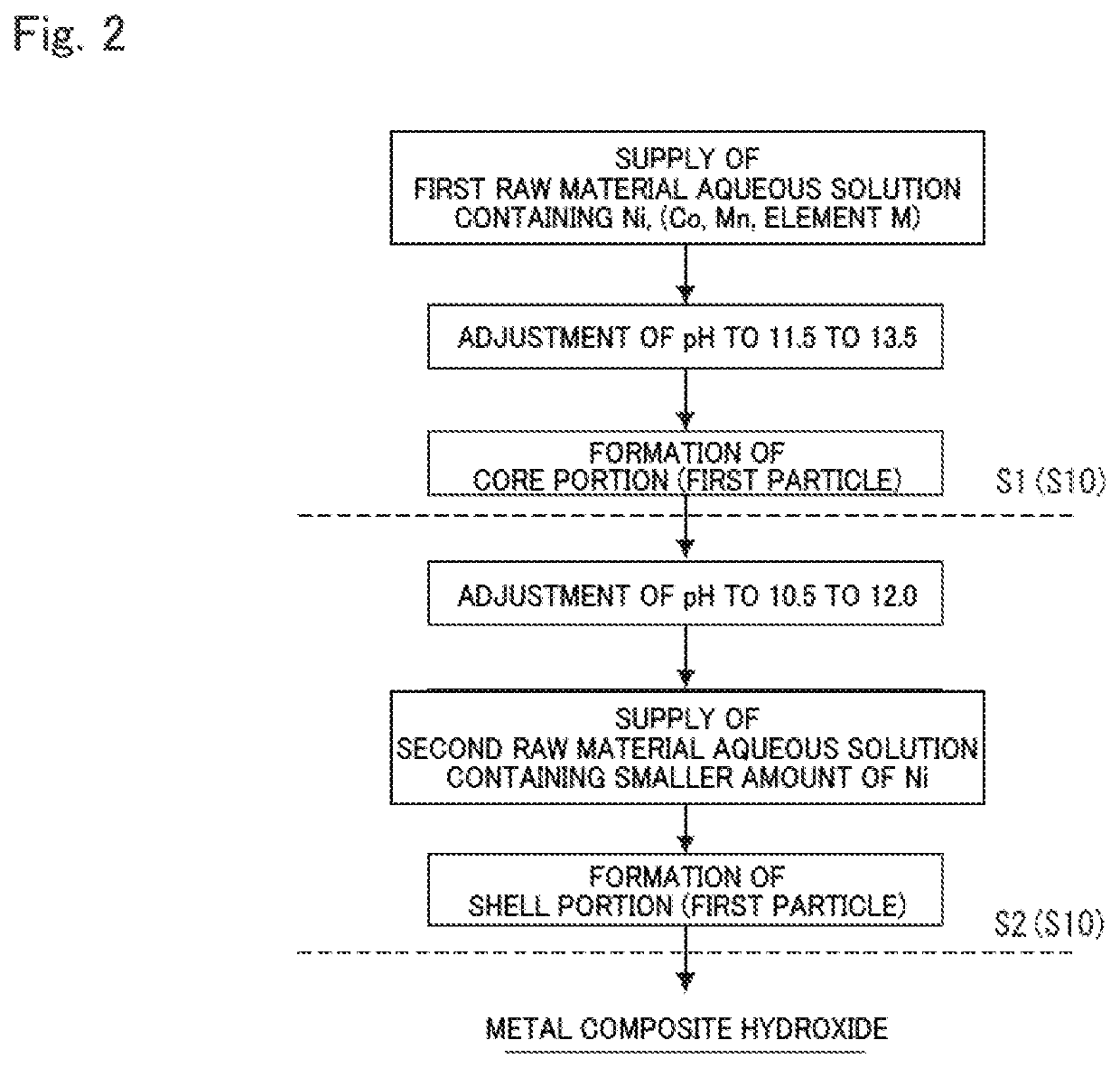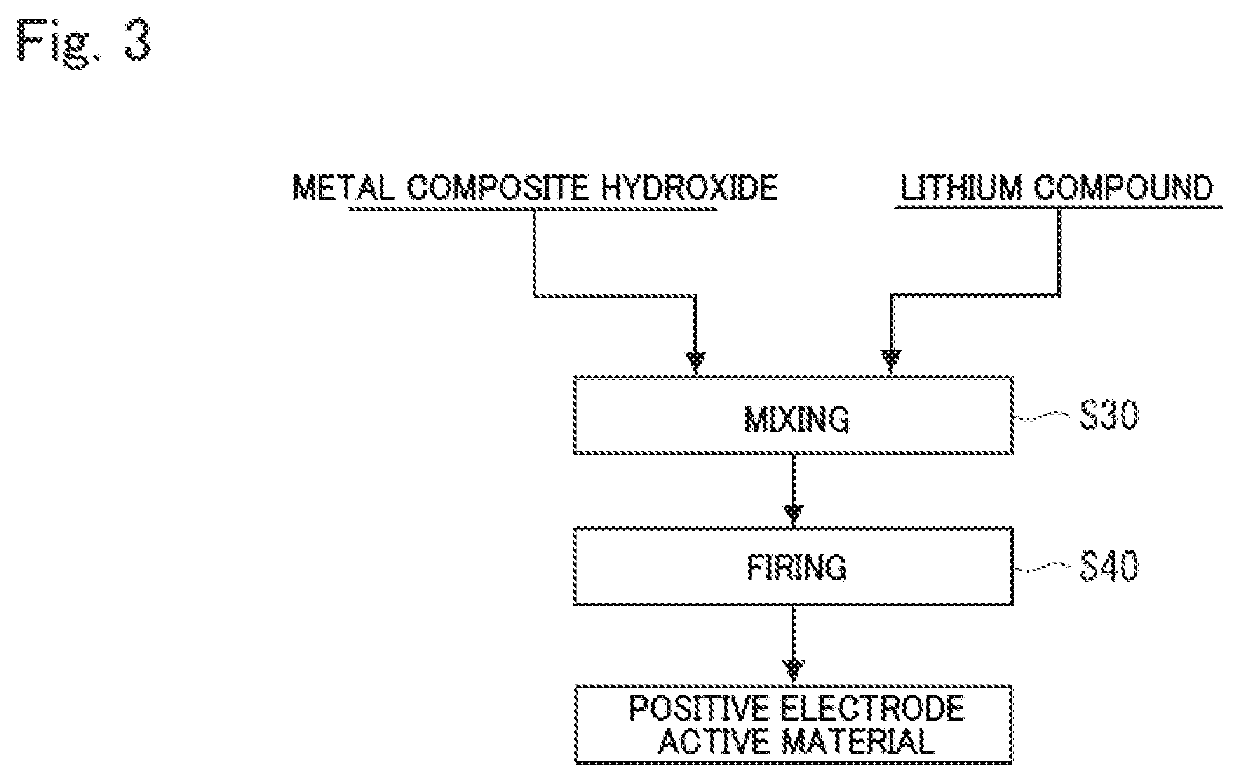Metal composite hydroxide and method for producing same, positive electrode active material for non-aqueous electrolyte secondary battery and method for producing same, and non-aqueous electrolyte secondary battery
- Summary
- Abstract
- Description
- Claims
- Application Information
AI Technical Summary
Benefits of technology
Problems solved by technology
Method used
Image
Examples
example 1
[0224]1. Production of Metal Composite Hydroxide
[0225][Preparation of First and Second Raw Material Aqueous Solutions]
[0226]As a first raw material aqueous solution, an aqueous solution having a concentration of 2 mol / L was prepared by dissolving nickel sulfate, cobalt sulfate, and manganese sulfate in water so that the molar ratio of the respective metal elements was Ni:Co:Mn=88:9:3. As a second raw material aqueous solution, an aqueous solution having a concentration of 2 mol / L was prepared by dissolving nickel sulfate, cobalt sulfate, and manganese sulfate in water so that the molar ratio of the respective metal elements was Ni:Co:Mn=45:10:45.
[0227][First Crystallization Process]
[0228]First, 14 L of water was put in a 60 L reaction tank, and the internal temperature of the tank was set to 40° C. while stirring the water. At this time, nitrogen gas was allowed to flow in the reaction tank for 30 minutes to set the reaction atmosphere to a non-oxidizing atmosphere having an oxygen ...
example 2
[0262]A metal composite hydroxide, a positive electrode active material, and a secondary battery were obtained and evaluated in the same manner as in Example 1 except that the amounts of the first and second raw material aqueous solutions supplied were adjusted so that the amount of metal elements supplied in each process with respect to the total amount of metal elements supplied was first crystallization process:second crystallization process=65 mol %:35 mol % in the crystallization process. The results are presented in Tables 1 and 2.
example 3
[0263]A metal composite hydroxide, a positive electrode active material, and a secondary battery were obtained and evaluated in the same manner as in Example 1 except that the amounts of the first and second raw material aqueous solutions supplied were adjusted so that the amount of metal elements supplied in each process with respect to the total amount of metal elements supplied was first crystallization process:second crystallization process=85 mol %:15 mol % in the crystallization process. The results are presented in Tables 1 and 2.
PUM
 Login to View More
Login to View More Abstract
Description
Claims
Application Information
 Login to View More
Login to View More - R&D
- Intellectual Property
- Life Sciences
- Materials
- Tech Scout
- Unparalleled Data Quality
- Higher Quality Content
- 60% Fewer Hallucinations
Browse by: Latest US Patents, China's latest patents, Technical Efficacy Thesaurus, Application Domain, Technology Topic, Popular Technical Reports.
© 2025 PatSnap. All rights reserved.Legal|Privacy policy|Modern Slavery Act Transparency Statement|Sitemap|About US| Contact US: help@patsnap.com



